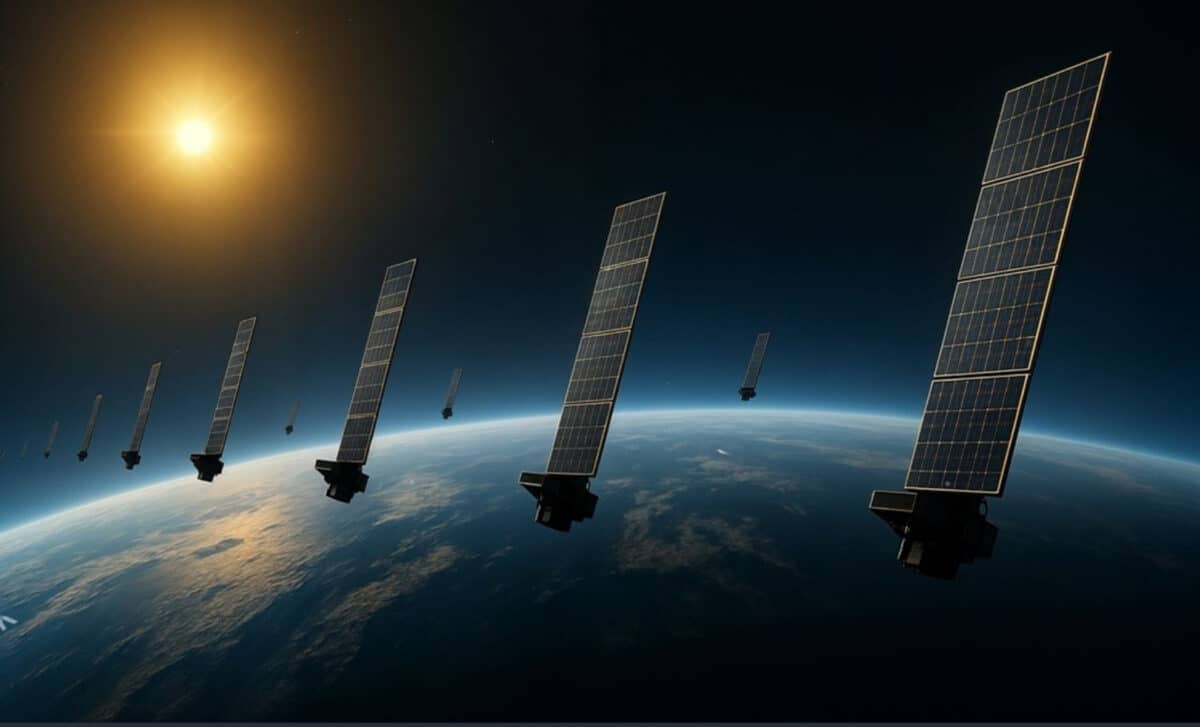SpaceX’s Starlink project, designed to provide global internet coverage through thousands of satellites, has raised concerns within the scientific community. The growing number of satellites is causing significant interference with astronomical observations, threatening to hinder critical research on the early universe. These disruptions could obscure faint cosmic signals and compromise our understanding of the cosmos.
Astronomers have long relied on radio observations to study the beginnings of the universe, particularly the Epoch of Reionization. However, the unintended radio emissions from Starlink satellites are making these observations more challenging. As SpaceX’s satellite constellation expands, there are growing calls from the scientific community for stricter regulations and better collaboration between the tech giant and astronomers to preserve the integrity of research.
China’s Hypersonic Missiles Could Strike Anywhere in 30 Minutes—Is the World Ready?
Interference From Starlink Satellites
Starlink satellites are causing noticeable interference in both optical and radio astronomy. According to recent studies, the radio emissions from certain satellite models, including v2-mini-Ku and v2-mini DTC, are particularly problematic.
These electromagnetic disturbances are most concerning when observing faint signals from the Epoch of Reionization, a key period in the universe’s early history. If left unaddressed, these interferences could mask critical cosmic data, potentially undermining scientific discoveries, reports Armées.
While SpaceX has made efforts to limit these disruptions, including deactivating some internet beams over specific telescopes, the problem persists. Astronomers fear that without effective solutions, the noise generated by Starlink satellites will continue to impact their ability to gather important data.
The Growing Number of Satellites
The Starlink network is rapidly expanding. As of now, there are more than 7,600 small satellites in low Earth orbit (LEO), with plans to increase this number to 12,000 and potentially up to 36,000 in the future.
This massive satellite constellation raises serious concerns about the management of the radio spectrum and its potential impact on scientific research. According to experts, only a small portion of the radio bands necessary for astronomy, such as those used by the SKA-Low project, are currently protected by international regulations.
The increasing number of satellites calls for more comprehensive rules and measures to ensure that the growth of commercial space activities does not hinder vital scientific research. Astronomers are urging that the protection of certain radio frequencies be strengthened to prevent further disruptions to their observations.
Collaboration Between SpaceX and the Scientific Community
Despite the challenges, there is ongoing dialogue between SpaceX and the scientific community, particularly astronomers specializing in optical observations. Researchers acknowledge the progress made in these discussions, but they stress the need for more collaboration in the field of radio astronomy as well.
As mentioned in recent statements, both sides recognize the importance of reducing electromagnetic emissions from satellites to protect ultra-sensitive scientific instruments like those used in the SKA-Low project.
The call for closer collaboration is not just about minimizing interference but also about ensuring that future developments in satellite technology do not further compromise our ability to explore and understand the universe.








